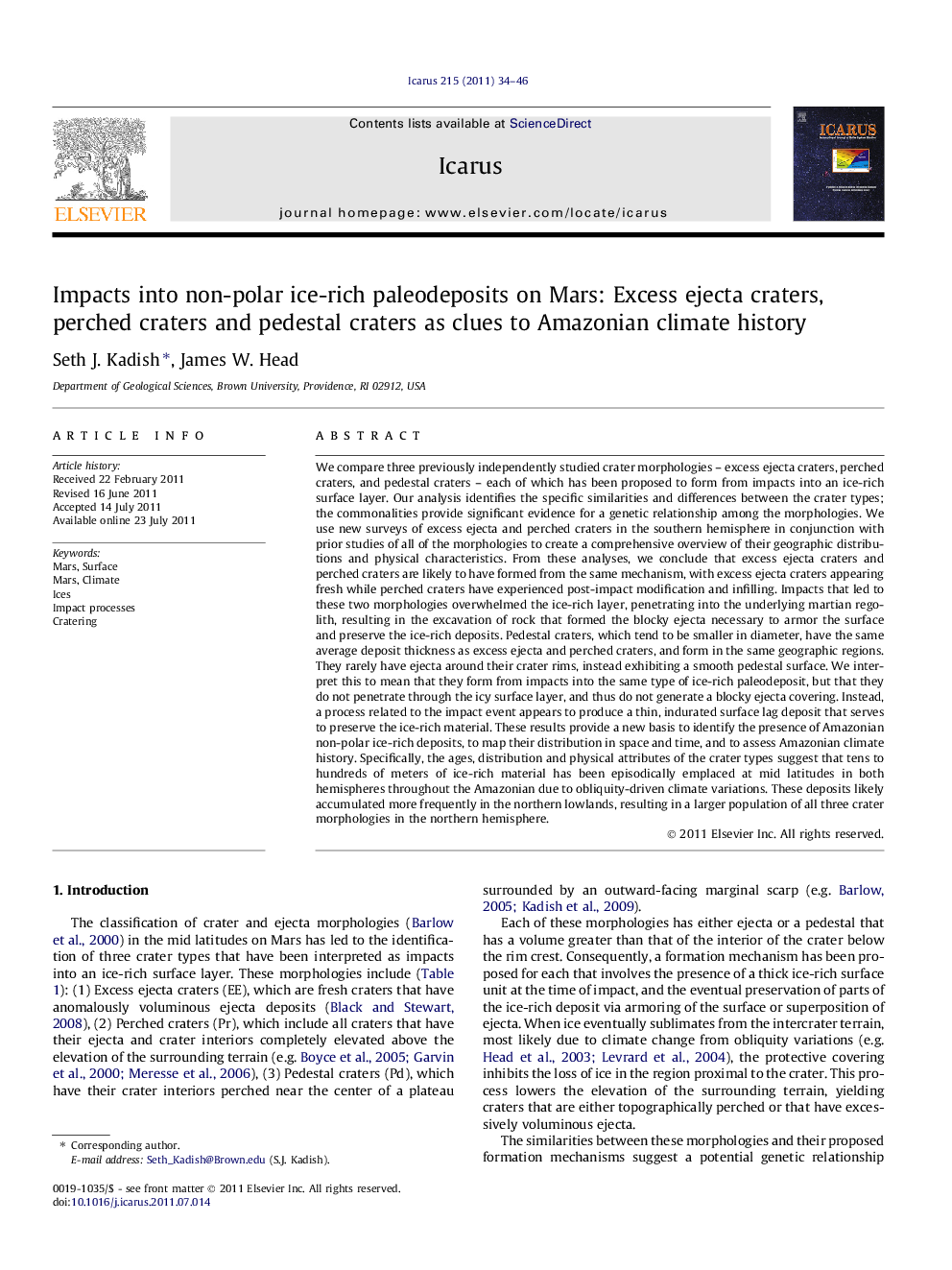| کد مقاله | کد نشریه | سال انتشار | مقاله انگلیسی | نسخه تمام متن |
|---|---|---|---|---|
| 1773965 | 1021153 | 2011 | 13 صفحه PDF | دانلود رایگان |

We compare three previously independently studied crater morphologies – excess ejecta craters, perched craters, and pedestal craters – each of which has been proposed to form from impacts into an ice-rich surface layer. Our analysis identifies the specific similarities and differences between the crater types; the commonalities provide significant evidence for a genetic relationship among the morphologies. We use new surveys of excess ejecta and perched craters in the southern hemisphere in conjunction with prior studies of all of the morphologies to create a comprehensive overview of their geographic distributions and physical characteristics. From these analyses, we conclude that excess ejecta craters and perched craters are likely to have formed from the same mechanism, with excess ejecta craters appearing fresh while perched craters have experienced post-impact modification and infilling. Impacts that led to these two morphologies overwhelmed the ice-rich layer, penetrating into the underlying martian regolith, resulting in the excavation of rock that formed the blocky ejecta necessary to armor the surface and preserve the ice-rich deposits. Pedestal craters, which tend to be smaller in diameter, have the same average deposit thickness as excess ejecta and perched craters, and form in the same geographic regions. They rarely have ejecta around their crater rims, instead exhibiting a smooth pedestal surface. We interpret this to mean that they form from impacts into the same type of ice-rich paleodeposit, but that they do not penetrate through the icy surface layer, and thus do not generate a blocky ejecta covering. Instead, a process related to the impact event appears to produce a thin, indurated surface lag deposit that serves to preserve the ice-rich material. These results provide a new basis to identify the presence of Amazonian non-polar ice-rich deposits, to map their distribution in space and time, and to assess Amazonian climate history. Specifically, the ages, distribution and physical attributes of the crater types suggest that tens to hundreds of meters of ice-rich material has been episodically emplaced at mid latitudes in both hemispheres throughout the Amazonian due to obliquity-driven climate variations. These deposits likely accumulated more frequently in the northern lowlands, resulting in a larger population of all three crater morphologies in the northern hemisphere.
► We compare excess ejecta craters, perched craters, and pedestal craters on Mars.
► Impacts into ice-rich paleodeposits yield the genetically-related morphologies.
► The crater types have very similar excess thicknesses and geographic distributions.
► The primary distinguishing traits are the crater diameters and ages.
► Amazonian climate change results in episodic ice-rich deposits at mid latitudes.
Journal: Icarus - Volume 215, Issue 1, September 2011, Pages 34–46